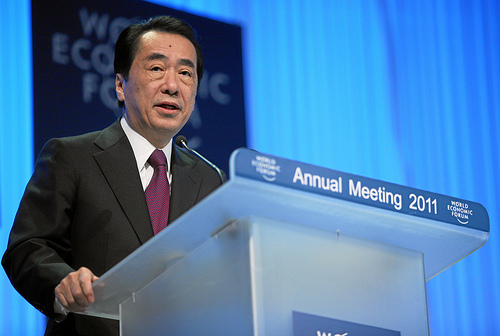When the East Coast was rocked by an earthquake this summer, there was a momentary bout of concern about a Virginia nuclear power plant that sat right on the fault line. The 5.8 quake was stronger than what the North Anna plant was designed to withstand, and the reactors had to be shut down. The Nuclear Regulatory Commission is still in the process of deciding whether they should be turned back on.
The watchdogs at the Project on Government Oversight are asking NRC Chairman Gregory Jaczko to release records related to the plant before a decision about reopening it is made. The group has requested records from plant owner Dominion, but were told that a lot of those records are sealed and housed at the University of Virginia’s library. POGO included with itsb letter a 34-year-old memo from the Department of Justice that indicates that the plant’s original owners knew that they were building it on a fault line as far back as 1970, but hid that from regulators at the time.
The memo, from May 1977, was the conclusion of an investigation into whether criminal charges should be brought against VEPCO for concealing this info. It notes that the plant’s original owner, Virginia Electric Power Company, along with engineering contractors the company hired, tried to cover up the fact that a fault had been found under the site in 1970. The company had already invested $730 million in the plant, and didn’t want the plant’s ability to get a license to operate compromised. From the memo:
Abandonment of the site would have been intolerable from both a financial and public relations standpoint for all persons involved. In addition, the contemporaneous notes of the VEPCO team are replete with suggestions to “overwhelm the NRC with talent” and prepare “a convincing story.” It is deeply disturbing to think that the peo0ple entrusted with design and construction of nuclear power plants for the purpose of producing energy for the public actually view the public as adversaries.
But then the NRC found out about the fault in 1973, and newspapers later covered it. Still, the NRC’s Office of Reactor Regulation didn’t do anything about it. The memo also states that when the Nuclear Regulatory Commission became aware of the fault under the nuclear plant, it decided it was not a threat:
The Nuclear Regulatory Commission determined that the fault discovered under the four nuclear reactors at the North Anna plant was not “capable” in terms of the NRC regulations.
The regulations are described here. Of course, we now know that the fault is fully “capable.”
The NRC did cite the company for making “material false statements” about the fault and fined it $32,500. But DOJ didn’t proceed with criminal charges, largely because the NRC’s actions at the time were “ill-considered and inept,” and the commission had been complaint in their attempts to hide the fault, the memo concludes.
POGO points to this memo as one good reason that the full records on North Anna should be released. “What happened at North Anna is unprecedented,” said Mia Steinle, a POGO investigator. “This is a safety issue of great public interest, so the public should have access to these locked-up records and should be able to take part in public hearings on the decision to restart.”















